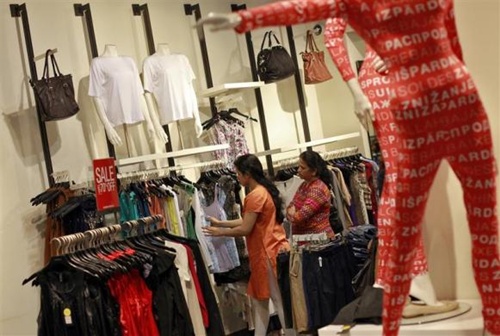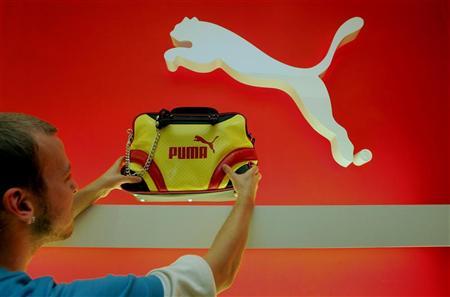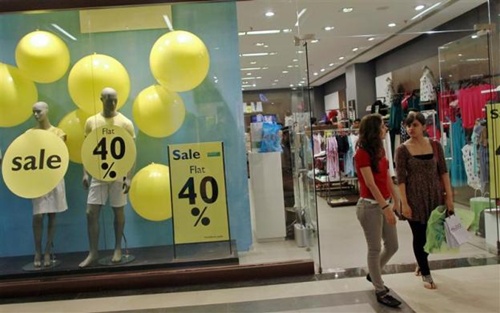 | « Back to article | Print this article |
Falling rupee is not about gloom and doom only
The falling Rupee might have spoilt the party for many an international brand, but not all is gloom and doom.
The German sportswear brand Puma’s India arm, Puma Sports India (Puma), has found a way around despite a high proportion of imports.
It has, for example, decided to bring in its international concept of the Puma Social to optimise the use of the additional space in a flagship store.
Now, the store has a food and beverages section on the lines of a pub, as a hangout and as a venue for after-parties of sports events it ties up with.
Click NEXT to read further. . .
Falling rupee is not about gloom and doom only
It is also planning to leverage sales of its products made at home, to tackle the pressure on margins of imported products.
Despite the decreasing sales in Europe and China, Puma continues its growth streak in India.
Puma is targeting a growth of 20 per cent this fiscal, slower than its previous year’s rate of 30 per cent, but still faster than its global sibling.
“No doubt, demand in India is more encouraging.
“We aim to grow our sales at 20 per cent in the next year as we continue our focus on performance products.
“However, with the way the dollar is going, the focus will be on profitability,” says Rajiv Mehta, Puma’s India managing director.
Click NEXT to read further. . .
Falling rupee is not about gloom and doom only
Puma, which makes 55 per cent of its revenues from its footwear business, imports 80 per cent of its offerings in the segment which makes it vulnerable to the rupee’s fortune.
A slowdown in consumer spending, too, has put a strain on its profits.
“We cannot pass everything to the consumer because we do not know where the dollar is going to stop.
“Also, in a category like ours, an increase in prices beyond a certain point makes people stop buying.
“So, we are doing our best to visit our operations and try to cut costs wherever possible,” says Mehta.
Puma is turning to more products made at home -- almost 80 per cent of its apparel and accessories.
Click NEXT to read further. . .
Falling rupee is not about gloom and doom only
It earns 35 per cent from apparel and 10 per cent from accessories.
To give its local products more room, it is contemplating the launch of accessories stores which will be a first for Puma anywhere.
“We are exploring that option and are in talks with Puma International to give us permission.
“There is a huge market for accessories in India -- retailers in other categories have sold accessories in separate stores and have been successful.
“There is potential if you cater to the right segment at the right time,” says Mehta.
Puma operates the front-end retail through a joint venture in India -- Puma India Retail -- with an undisclosed India partner, which owns and operates about 30 stores in the country.
“The other stores are operated by franchisees.
Click NEXT to read further. . .
Falling rupee is not about gloom and doom only
While Puma already has an accessories line -- bags, watches, armbands, socks and water bottles, among others -- the retailer faced space crunch in the existing stores.
The company believes, opening outlets for accessories will not only increase its merchandise but also work better in a country with a large unorganised accessories market.
With the supply of new malls shrinking, Puma is facing a challenge in expanding its main line-offering. But it is trying out different forms of marketing to net the urban youth.
Its Puma Social Club in Bengaluru is one of the ways, while it is also trying to cash in on the popularity of running among the urban youth as it partners in running events such the Urban Stampede and Spirit of Wipro Run. Puma is also looking at going upcountry with the Kaveri Trail Marathon -- a 5-10-km run along the Kaveri river.
Click NEXT to read further. . .
Falling rupee is not about gloom and doom only
It has outrun the other three sportswear majors in launching the first exclusive e-commerce portal, owned by a franchisee.
The company says it has begun to contribute to 1 per cent to the brand’s overall sales.
The sportswear retail market in the cricket-crazy nation is estimated at Rs 36,580 crore (Rs 365.8 billion) and is expected to grow at 33 per cent until 2014, estimates an EY report.
However, the country’s sportswear segment is largely unorganised, with brands constituting only about 30 per cent of the market, according to the report in 2012.
As Ankur Bisen, vice-president -- retail and consumer products, at Technopak Advisors says, “Puma has invested a lot in its exclusive branded outlets and like the others, exploited the multi-branded outlets to increase penetration.
Click NEXT to read further. . .
Falling rupee is not about gloom and doom only
The next wave of growth in this industry will be seen in the tier II and III markets where brands have achieved significant awareness but limited availability.”
Puma recently opened a store in Ahmedabad, adding to its presence in about 80 towns in that region.
“While growth in tier I towns has slowed to about 10 per cent, we are seeing tier II and III grow at about 20 per cent.
“We are working on opening new stores, rather than depend on franchisees, wherever the market is promising. But the focus is clearly on growing those markets,” Mehta agrees.







